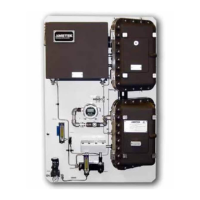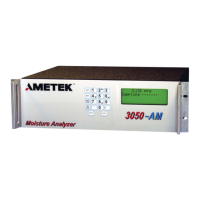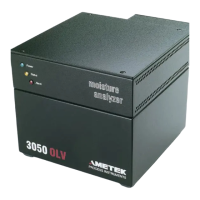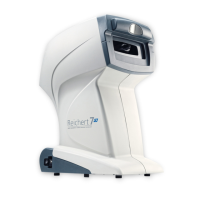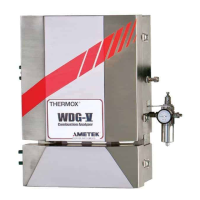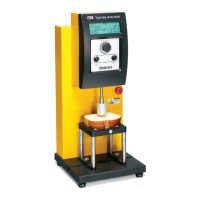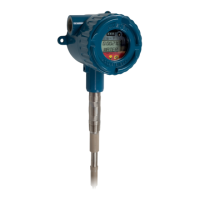6-24 | Model 931S / Model 932S UV Analyzers
When is an Auto-Setup Required / Not Required?
The Auto-Setup optimizes PMT (photomultiplier tube) gains and the
source lamp currents. After the Auto-Setup is complete, the Automatic
Lamp Control (ALC On) is automatically turned on. View the current
status of this function on the Optical Bench dialog box. ALC On will be
enabled when this function is on.
Auto-Setup is required when:
• The “w: PMT signal out of range” alarm is displayed under MC Scode
on the Status tab.
• One or both source lamps are replaced or adjusted.
• The Measuring Cell Windows and/or optics are cleaned.
• Any optical filter is replaced.
• One or both PMTs are replaced.
• The Optical Bench board is replaced.
An Auto-Setup is not required as part of a preventive maintenance sched-
ule (that is, do not perform an Auto-Setup every month).
PMT Level and PMT Balance
PMT Level and PMT Balance are adjusted only during the Auto-
Setup sequence. The typical range of operation for both parameters is
0–10000 mV. After a successful Auto-Setup, the PMT Level should be
7200–7400 mV while the PMT Balance should be between 2000–8000 mV.
The analyzer will function with values outside this range, but it is a sign
that a change has likely occurred in the transmission of light within the
Optical Bench (for example: dirty windows, weak lamps, weak PMTs,
faulty PMT Buffer board) – refer to “Troubleshooting and Diagnostics” in
this chapter for alarm conditions and corrective action.
At the end of every Auto-Setup, always check the PMT Level and PMT
Balance. Take note of severe changes in PMT Level and PMT Balance
because they are as important as the absolute value.
The PMT Level signal adjusts the gain of both PMTs simultaneously in
the same direction. PMT Balance adjusts the gain of the two PMTs in
opposite directions by controlling a virtual ground circuit on the Optical
Bench board.

